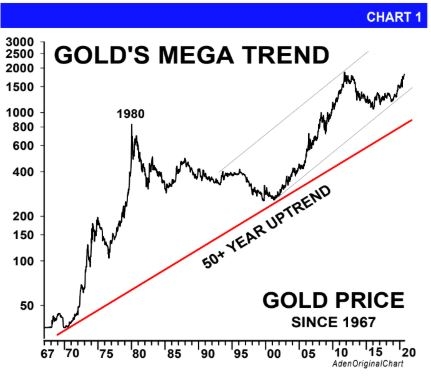There is a problem with gold ETFs like GLD (NYSE:GLD), iShares Gold Trust (NYSE:IAU), and GraniteShares Gold Trust (NYSE:BAR). They don’t pay any yield at all to investors. Gold prices have increased over 500% over the past 20 years versus 370% on the S&P 500 Total Return Index. However, there is an easy way that you could have further enhanced your return. The Strategy Shares Gold Hedged Bond ETF (Ticker GLDB) pays a 2.5% distribution yield while tracking the price of gold.

The ETF has a full 100% exposure to gold that enables it to track the Solactive Gold Backed Bond Index. The Solactive Gold Backed Bond Index is comprised of a portfolio of investment grade corporate bonds that is fully hedged to the price of gold to protect against inflation. Since Solactive started tracking data on the Gold Backed Bond Index on Jan. 3, 2006, through its launch the total annualized return has been 14.57% annualized. The Fed embarking on a policy of printing trillions of dollars makes it likely that this trend could persist.
It was Mar. 23 when Neel Kashkari, president of the Federal Reserve Bank of Minneapolis, said Sunday night on CBS’s “60 Minutes” that “there is an infinite amount of cash in the Federal Reserve. We will do whatever we need to do in order to make sure there’s enough cash in the banking system.” Approximately twelve hours later, the Fed aggressively started a policy of “quantitative easing” or in colloquial terms printing money. The goal of this Federal Reserve action was to clarify they will print as much money as necessary to bail out the economy and inflate asset prices. In the past year and a half, the Federal Reserve has increased the money supply by over 30%.
So, what is the negative impact of the Federal Reserve printing money on your nest egg and inflation? As more new money is printed, the less all of the pre-existing money is worth. The more new money that exists from the Fed printing press, the less all of your old money is worth. Yet the Federal Reserve can’t print gold, so gold has done a phenomenal job of maintaining its purchasing power and has actually beat the returns of the S&P 500 so far this century.
